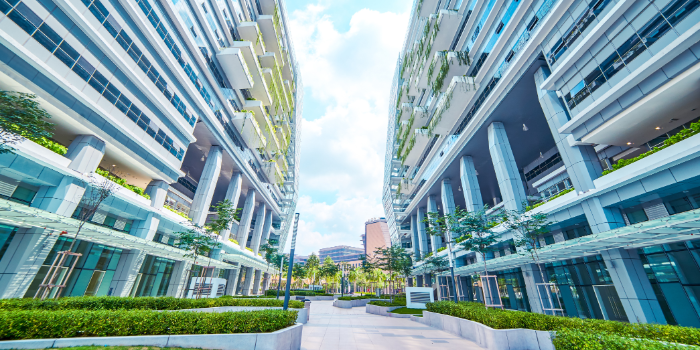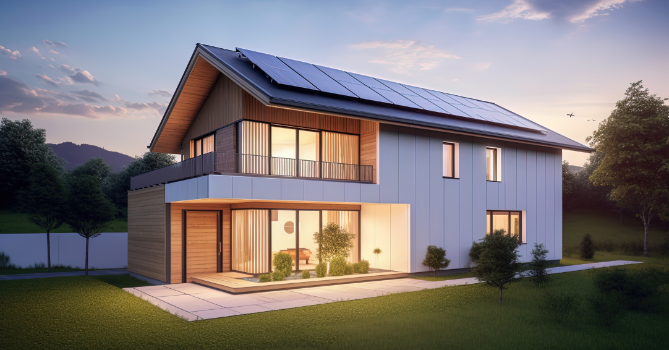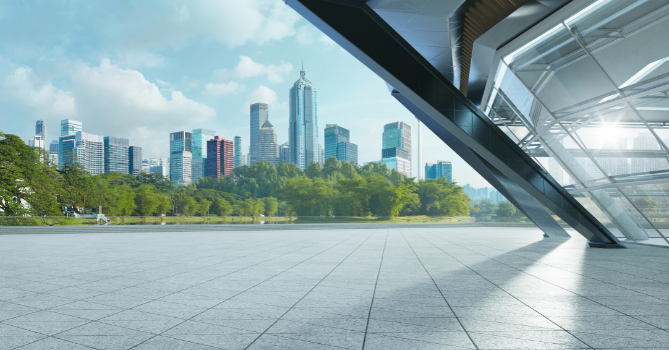
Building the Future: William McDonough's Vision for Sustainable Architecture
William McDonough is a name that resonates deeply in the world of architecture, especially when it comes to sustainability. Have you ever thought about buildings that do more good than harm? That’s what McDonough has been working towards throughout his career. He's not just any architect; he's a pioneer of the sustainable architecture movement. His philosophy, "Cradle to Cradle," revolutionizes how we think about design, urging us to consider a building's full lifecycle, from construction to eventual reuse.
Why should we care? Because the way we build impacts our planet. Buildings are more than just structures; they are part of our communities, our workplaces, and our homes. They use resources, energy, and space. McDonough’s approach challenges the norm by integrating environmental intelligence into every design, ensuring that each building contributes positively to its environment.
McDonough’s impact is evident in his projects. For example, the Ford Rouge plant redesign not only transformed an industrial facility but also turned it into a model of sustainable design. His work teaches us that every building has the potential to be both beautiful and good for the earth.
What does this mean for the future of architecture? It opens up a world of possibilities where buildings can help clean the air, produce more energy than they consume, and even increase biodiversity. This is the future McDonough envisions—a world where architecture and nature work in harmony.
This blog post is just the start. We’ll explore McDonough’s revolutionary ideas and their real-world applications, delving into how they're shaping the future of building. So, stay tuned and think about how the spaces you occupy can do more for the world.
William McDonough has dramatically influenced the field of sustainable architecture, proving that eco-friendly designs can be both practical and visually stunning. His approach isn't just about reducing harm; it’s about creating buildings that are actively good for the environment. This idea has sparked a new way of thinking in architecture that benefits both people and the planet.
One of McDonough’s notable projects is the redesign of Ford’s Rouge plant. Here, he transformed an old, polluting industrial site into a sustainable facility that includes a living roof—the largest of its time. This green roof not only reduces stormwater runoff but also improves insulation, cutting energy costs dramatically. It’s a clear example of how integrating natural elements into architecture can solve multiple problems at once.
Another impactful project is the Adam Joseph Lewis Center for Environmental Studies at Oberlin College. This building is designed to be net positive, meaning it produces more energy than it uses. It incorporates solar panels, geothermal heating, and natural lighting, reducing its reliance on non-renewable energy sources. The center also treats its wastewater, showcasing a complete cycle of sustainability that’s rare in building designs.

McDonough’s work extends beyond individual buildings. His "Cradle to Cradle" certification has set a new standard in sustainable design by encouraging manufacturers to think about a product’s entire lifecycle. This certification looks at material health, material reutilization, renewable energy use, water stewardship, and social fairness. Products and projects that meet these stringent criteria are recognized as truly sustainable, influencing industries worldwide.
Through his writing and speaking engagements, McDonough has spread the word about sustainable design far and wide. His books, like “Cradle to Cradle: Remaking the Way We Make Things,” co-authored with Michael Braungart, have inspired architects, planners, and environmentalists to think differently about how materials are used and disposed of.
McDonough’s legacy is evident in the growing trend towards sustainable architecture. He has shown that thoughtful design not only saves energy and materials but can also regenerate the environments we live in. As we look to the future, his principles guide us towards more innovative and environmentally responsible architectural solutions. These projects serve as beacons, demonstrating what is possible when sustainability is placed at the heart of design.
In the world of architecture, technology plays a pivotal role in pushing the boundaries of sustainable design. Architects now have tools that not only enhance the creativity of their designs but also improve the sustainability of their projects. Let’s explore how these technological innovations are making buildings smarter and greener.
Building Information Modeling (BIM) is one of the game changers. This digital tool allows architects and engineers to create detailed 3D models of a building before construction even begins. BIM helps in planning and managing projects more efficiently, reducing waste and ensuring that materials are used optimally. For instance, BIM models can simulate energy performance and identify the best solutions for energy-saving before a building is built.
Smart glass technology is another innovation revolutionizing sustainable architecture. This technology allows windows to change their transparency based on the sunlight's intensity, improving natural lighting while minimizing heat gain and loss. Such advancements significantly reduce a building's reliance on artificial lighting and air conditioning, slashing energy costs and carbon emissions.
The integration of solar panels into building designs has also evolved. Modern photovoltaic glass can be incorporated into windows, facades, and even roofs, transforming entire buildings into energy generators. This not only helps buildings become energy self-sufficient but also turns them into active players in urban energy systems.
Automation and AI are also making their mark. These technologies enable buildings to automatically adjust heating, cooling, and lighting systems for optimal comfort and energy efficiency. Sensors can detect occupancy and ambient conditions, adjusting the environment accordingly, which enhances user comfort while minimizing energy use.
Each of these technologies shows how integrating digital tools and innovative materials into architecture can lead to more sustainable building practices. By harnessing these advancements, architects are not just designing buildings but are crafting future-ready environments that contribute positively to our planet’s health.

Addressing global challenges in sustainability requires innovative thinking and cooperative strategies, especially in the field of architecture. Urbanization and climate change are pushing architects and city planners to rethink how and where we build. Here are some of the major challenges and innovative solutions that are shaping sustainable architecture globally.
Land scarcity and urban density pose significant challenges, especially in rapidly growing cities. Architects are responding with vertical solutions and mixed-use developments that maximize space. For example, green roofs and vertical gardens help reduce a building's heat island effect while providing green spaces in dense urban environments.
Resource depletion is another pressing issue. Sustainable architecture is combating this through the use of recycled materials and renewable resources. Innovations like bamboo, which is both fast-growing and sturdy, are becoming popular alternatives to traditional building materials like wood and steel.
Energy consumption in buildings is a major contributor to global carbon emissions. To address this, architects are integrating smart technologies such as automated energy management systems and advanced insulation materials to reduce energy use. Buildings are increasingly designed to be energy-positive, contributing power back to the grid through solar panels and wind turbines.
Water management is critical, especially in areas prone to drought or flooding. Sustainable building designs include features like rainwater harvesting systems and water-efficient landscaping to reduce water use and manage stormwater on-site.
Lastly, engaging local communities in the planning process ensures that the solutions are culturally appropriate and supported by those who will use them most. This includes respecting local architectural styles and environmental conditions, which not only preserves cultural heritage but also enhances community acceptance and longevity of the projects.
These solutions show how addressing global sustainability challenges requires a multifaceted approach that combines technology, innovative materials, and community engagement to create environments that are efficient, adaptable, and harmonious with their natural surroundings.
Looking ahead, the future of sustainable architecture promises to be both exciting and transformative. Advances in technology and a deeper understanding of environmental impacts are driving architects and builders towards even more innovative solutions.
One major trend is the growing emphasis on net-zero buildings. These structures are designed to generate as much energy as they consume over the course of a year, using a combination of energy efficiency measures and renewable energy generation, such as solar panels. The push towards net-zero is becoming more feasible as technologies improve and become more cost-effective.
Material innovation is also pivotal. Researchers are developing new materials that are not only environmentally friendly but also enhance the performance of buildings. For instance, bio-based materials and smart adaptive materials that can change properties in response to environmental conditions are on the rise. These materials help buildings react dynamically to heat, light, and water, thereby improving energy efficiency without compromising on design or comfort.
Furthermore, digital tools like BIM and digital twins are set to redefine the planning and maintenance of buildings. These technologies allow for a more precise and efficient construction process, reduced waste, and the ability to simulate and optimize building performance before construction even begins.
Incorporating green infrastructure is another key area. This includes not only green roofs and walls but also the integration of landscapes that are part of a city’s ecosystem. This approach not only enhances the aesthetics of urban areas but also helps in managing rainwater, reducing heat, and improving air quality.
As we move forward, the integration of sustainable practices in architecture will not only focus on reducing the environmental footprint but also on enhancing the quality of life for urban populations. The future of sustainable architecture holds the promise of creating environments that are not only energy-efficient but also harmonious with their natural surroundings.
As we've explored the innovative and sustainable strides made by William McDonough and others in the field, it's clear that the future of architecture holds incredible potential for environmental stewardship and technological integration. The commitment to building structures that not only meet our needs but also contribute positively to the environment is more crucial than ever. By embracing smarter materials, energy-efficient designs, and community-focused solutions, architects are paving the way toward a more sustainable and resilient future. This journey is not just about reducing footprints but about creating spaces that nurture and sustain life for generations to come. Let's continue to push the boundaries of what's possible in architecture, always with an eye towards a greener, more sustainable world.